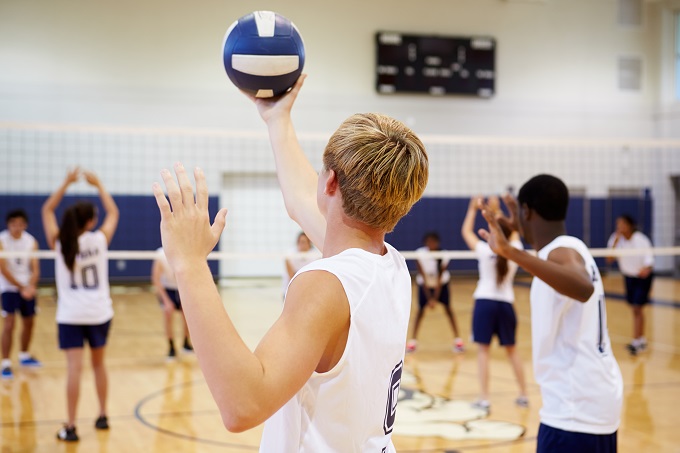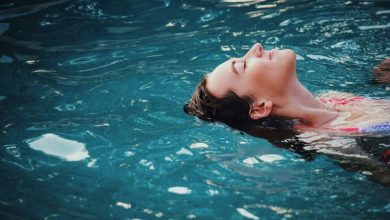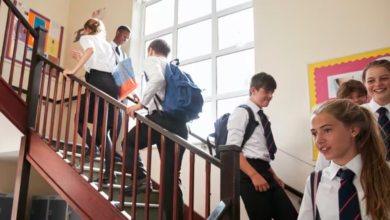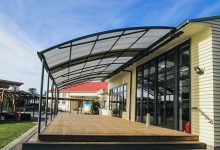Get your gym flooring into shape
Educators recognise that physical activity in childhood extends well beyond the physical realm.

The development and practice of physical skills improves mental, social and emotional abilities.
This article originally appeared in our Term 4 issue.
Teamwork, perseverance, strategy: these are all powerful tools that learners exercise in a school gymnasium. Considering all this, the recommended 60 minutes of vigorous exercise a day doesn’t quite seem enough!
Therefore, it is vital to have an indoor area (school gymnasium) where students can safely exercise or play sport, despite the risk of inclement weather making the modern, safe and inspiring school gym an essential part of your educational environment. Not only is this a space for sport and exercise but it can be an ideal spot for the whole school to gather for assemblies, drama productions, music practice and other non-sporting events.
When older schools are in need of investment or refurbishment for their buildings, classrooms tend to take priority in the budget, but often that money is better spent money on communal areas like the gymnasium. Leaving a gym to deteriorate is a huge mistake because the floor space here tends to be vast and refurbishment/replacement costs of the floor can skyrocket over time, especially if it is wooden. Not to mention that gym space is valuable real estate that your school may be able to capitalise on.
To inform your purchasing and refurbishment options ahead of a gym upgrade, you should list activities you want to use the space for and build-up knowledge of latest fitness education best practice and safety regulations. That last one in particular can be a tricky beast to master.
Especially when injuries can lead to legal action and worse. According to the New Zealand Government, “In 2016, the overall rate of injury claims was 107 claims per 1000 full-time equivalent employees”. Worksafe New Zealand lists “slips, trips and falls” as “examples of some of the key health and safety risks with wet or badly cleaned floors cited as some of the ways common injuries happen.
Which circles us back to your gym floor… If you look closely enough, even a modern and well-maintained gym can have potential dangers lurking beneath and without a risk assessment, proper refurbishment, planning and maintenance, can lead to serious injuries.
Your first step should be to identify hazards. Once a risk has been established, assess what action needs to be taken, how soon and what preventative measures should be put in place. If the risk can be removed completely – remove it.
If you identify a floor that poses a risk, you should replace those floors but if you can’t replace the hazard, you must minimise the risk in some other way. Perhaps refurbish or replace sections of floor or seek advice on other options like mats. Of course, your solution must always meet New Zealand industry standards.
Common flooring materials include rubber, which can be an inexpensive choice but, depending on the material, may wear and require constant assessment and replacement of worn sections. Timber floors can be expensive, depending on the type of wood selected, but are incredibly long-lasting if well-maintained. If badly maintained, you will have a storm coming when you eventually need to pull up the boards. Other types of flooring are point elastic floors, that can be laid over the top of existing wood or concrete.
In gyms, shock absorption is a very important consideration, with timber providing more efficient shock absorption for heavier bodies. Point elastic flooring tends to be better at breaking falls for smaller bodies and cushioned vinyl is an alternative option that provides resilience against injury and promotes noise reduction.
In high schools, where professional-standard sports training is undertaken, it is vital to seek recommendations from the appropriate international sports body as to what type of floor is best for that sport.
Wood is a versatile option that can be used for different needs. For example, where a wooden basketball court would benefit from closer battens, a dancefloor can benefit from a springy underlay. There are also multi-purpose materials that seek to balance the needs of most commonly played sports.
Ask your supplier about different options for different sports, non-sport activities as well as age groups and of course consider how it will look…
Vinyl and rubber-type point elastic flooring can come in all colours and designs, customised for the need and preference of each school while wooden floors vary in type and finish but offer a more classic feel. Court lines are usually painted over wood and poured into the construction of rubber or polyurethane floor designs. Think about what style of flooring will best promote your school and also inspire your students to get active.
Final tip: remember the horrific sound of chairs being dragged across the school gym? You can avoid that altogether if you factor seating into your choice. Ask your supplier to advise on how you can prevent earache, scratching and floor damage. Rubber-type flooring can dampen the sound of chairs being dragged, while wood provides more stability for permanent or semi-permanent seating.









